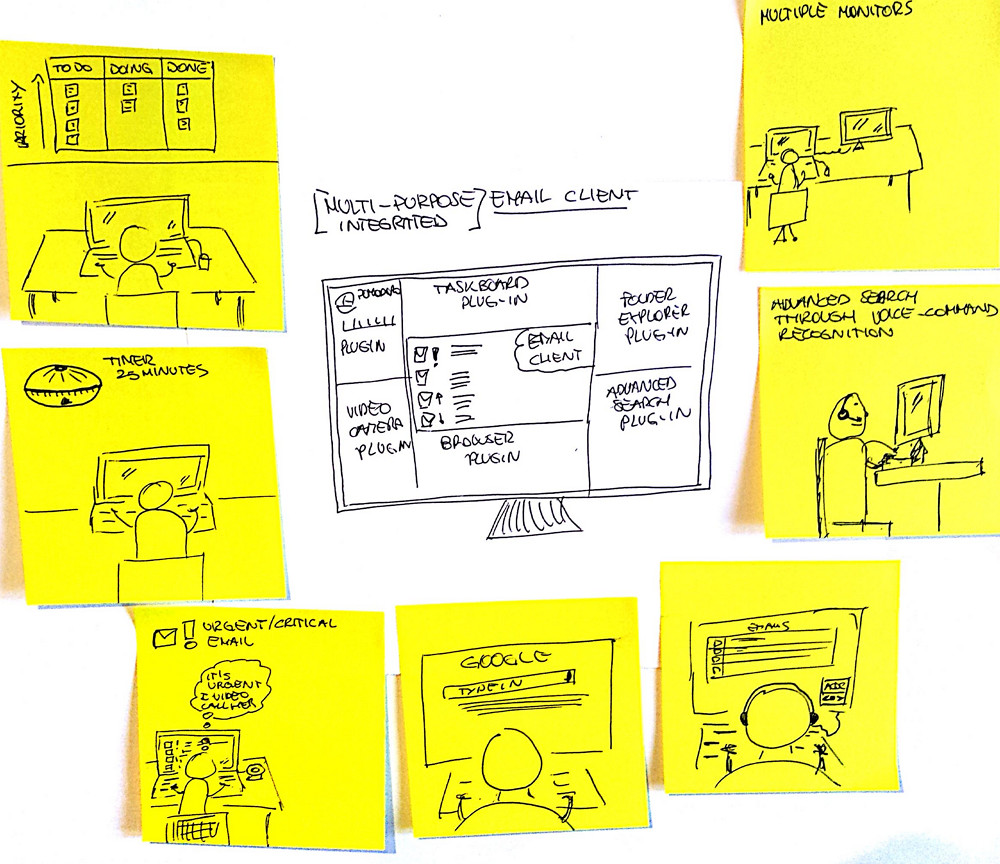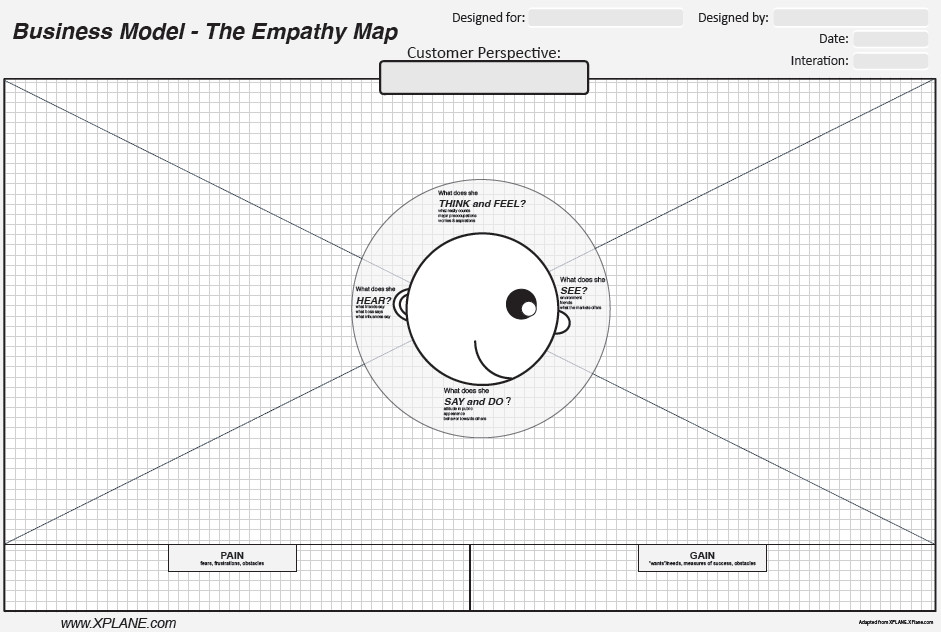Do you know that design thinking is a bit of science and lots of creativity, mixed together to conceive great new products or services?
When I first approached to Design Thinking I was asked to “just” open my mind, relax and observe.
Observe people and their interactions with the environment among them.
In that case I observed the shopping experience of customers in a big grocery store, taking notes and pictures about their “pains”, habits, necessities, difficulties, when doing the shopping.
The next step according to that observation, was to arrange my thoughts, categorize them and to start generating insights in the form of “HMW?” (How Might We help people when [difficulty in doing the shopping] to be more [result to aim to]?).
The more the insights generated (dozens) the more the possibilities to find the right solution.
Then, I started to figure out options according to those insights by sketching multiple ideas on sheets of paper or post-its, about how to support, help or solve problems of those people. That was an amazing phase because even if I am not a great designer at all, my hands and fingers were literally linked with my brain, just sketching, suspending judgement and mainly aiming to quantity (of ideas), not quality.

The next phase was to choose the most interesting ones and to create prototypes.
Prototyping is a powerful tool that helps you to transform an intangible thing like and idea, transforming it in a real object and, most important, gather the user feedback, accelerating learning.
These prototypes could be “physical” objects made with cardboard or plastic or whatever moldable material, or representing intangible products like software, creating mock-ups and acquiring them on smartphones simulating the real interaction and navigation.
The penultimate stage was to get in touch with customer, showing the prototypes and giving her the possibility to interact with prototypes in order to give real feedback.
This precious feedback was finally re-used to adjust and consolidate prototypes, ready to be proposed as the final idea for new products.
Design Thinking
Design thinking is a well-defined method for creative resolution of problems, by observing the reality, generating insights and creating solutions at a low cost.
It starts with a current state and envisage a better future situation, exploring alternated solutions.
It involves from the very beginning the final user and keeps this relationship alive, until the very end.
Despite the scientific approach which beforehand explores and defined all the available known variables to identify solutions, Design Thinking starts to explore the current situation, with its ambiguity, to discover any hidden or unknown information or pattern and formulate alternatives.
Its nature is iterative: intermediate hypothesis are formulated, prototypes help to validate them incrementally and solutions often emerges walking this fascinating exploratory cycle.
Therefore, a good designer is someone who incessantly looks for a deep understanding of the observed person and the related process, for whom she is designing.
Empathy is hence a mandatory personal and professional attitude, a designer must have and develop over time.
The Empathy Map
A tool that helps to explore user needs is the Empathy Map: a simple but great tool indeed, to help synthesize observations and generate insights.
It is centered on what the user says, does, thinks and feels and, according to this analysis, what the pains and gains are, in order to start generating ideas for possible solutions.
The canvas can be used to start to interact with the users, taking notes of the following:
- SAY: What words or quotes the user said regarding the problem you are investigating?
- DO: What actions or behaviors the user did or showed? What his attitude, habit or appearance?
- THINK: What the user could have thought during the experience you are observing?
- FEEL: What emotions might the person be feeling?
Weather the SAY and DO parts of the observation are actually objective, the THINK and FEEL ones cannot. This is where empathy comes to play: you as a designer have to pay careful attention to any emotion or clue eventually emerge from this observation.
Now it’s time to summarize any fear, frustration, impediment or obstacle in the PAIN quadrant and, finally, identify any related want, need or necessity as GAINs.
Well, now you are definitel ready for the next part of the process: to start generating HMW, insights, options and ideas.




